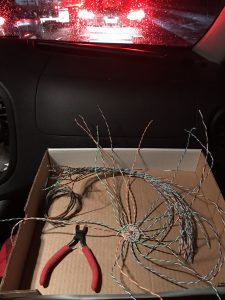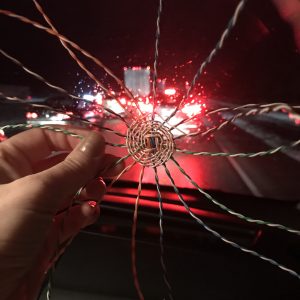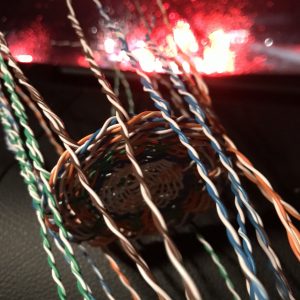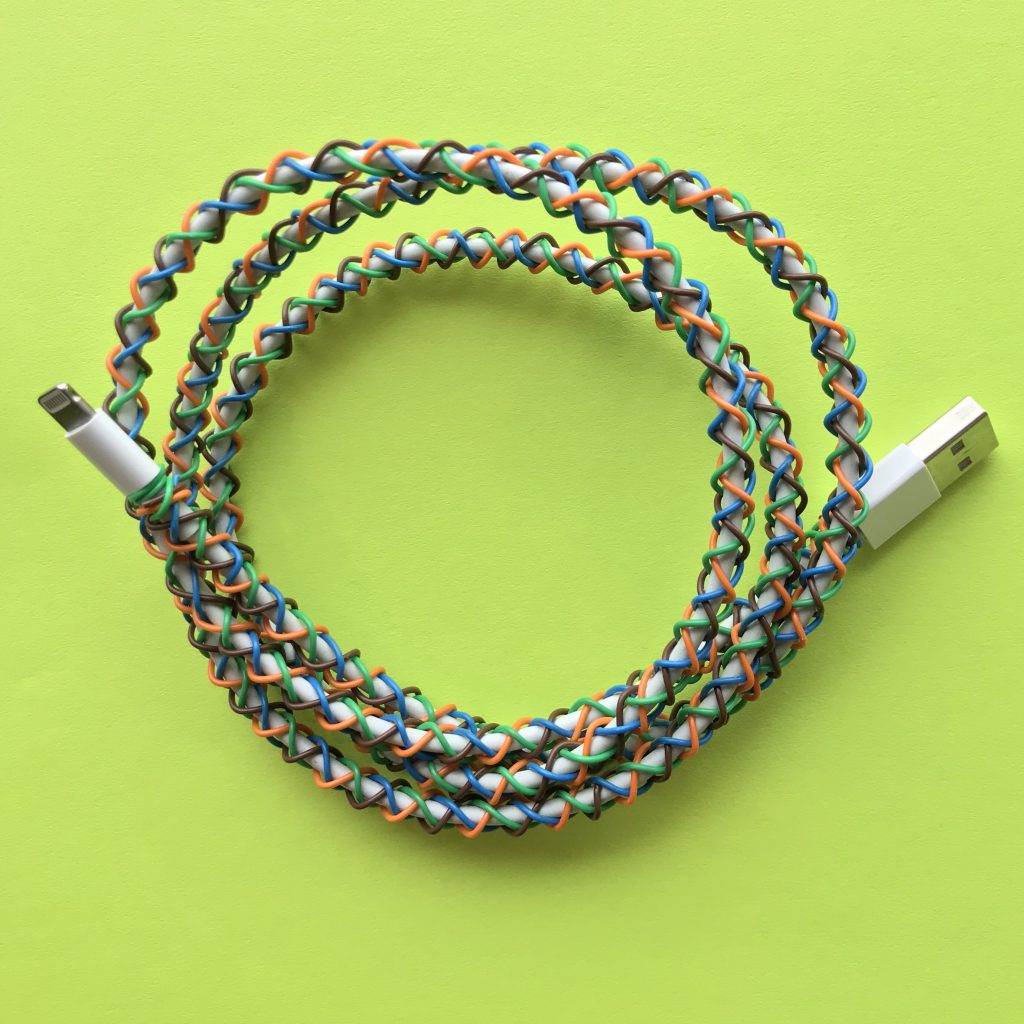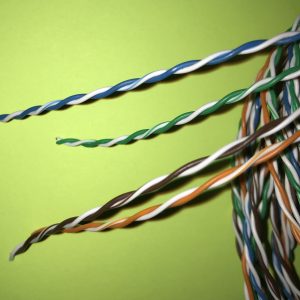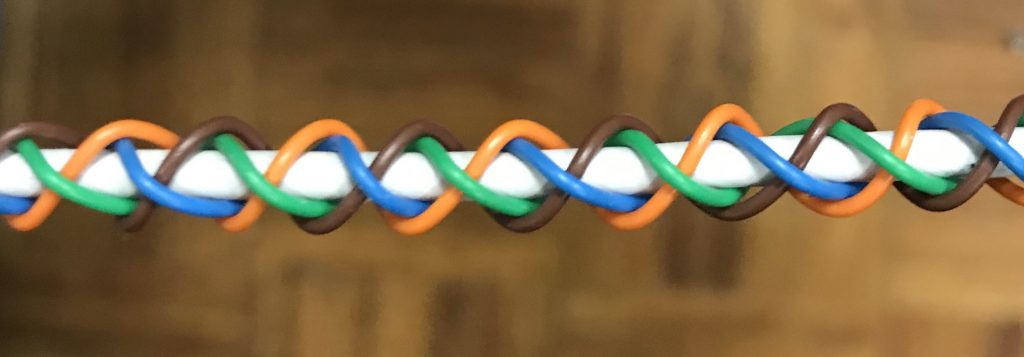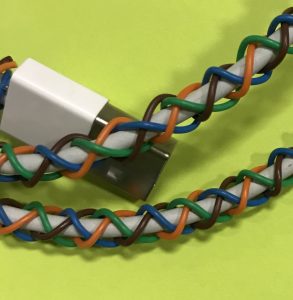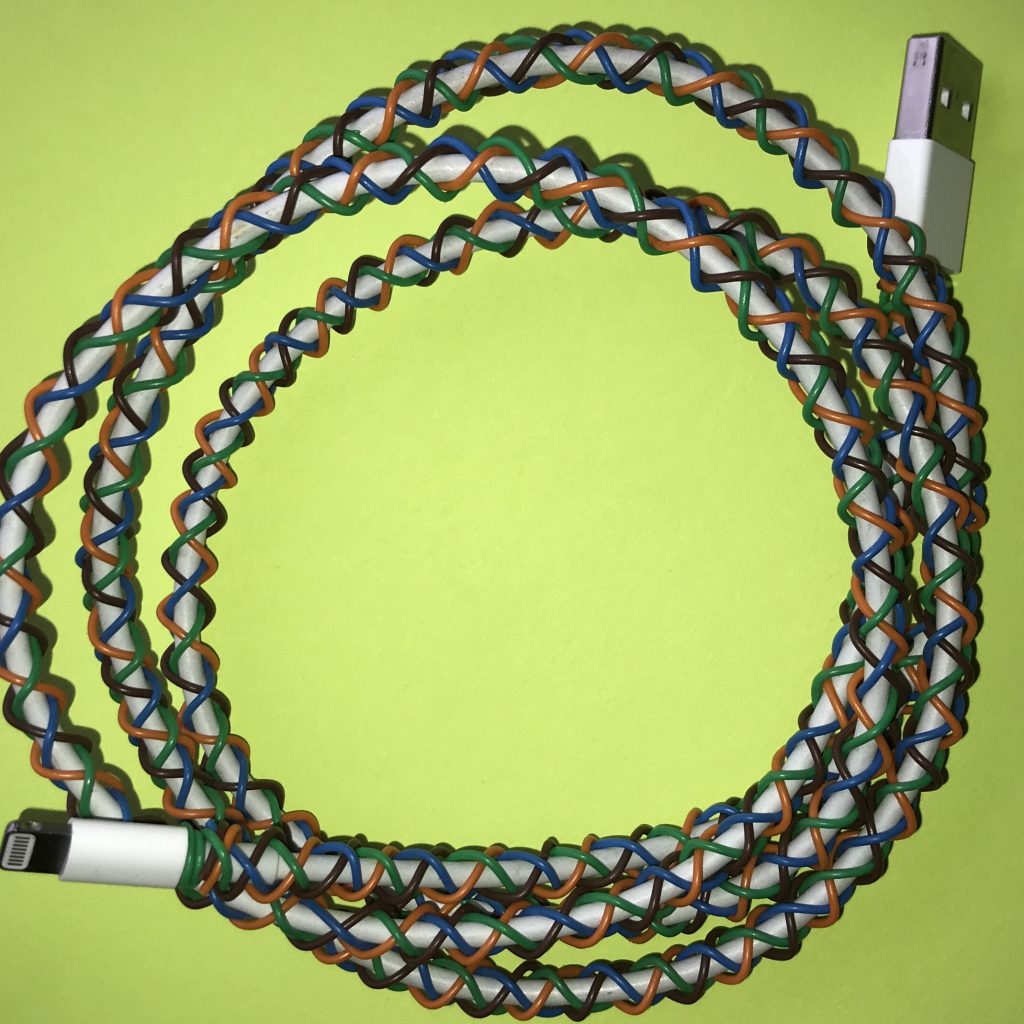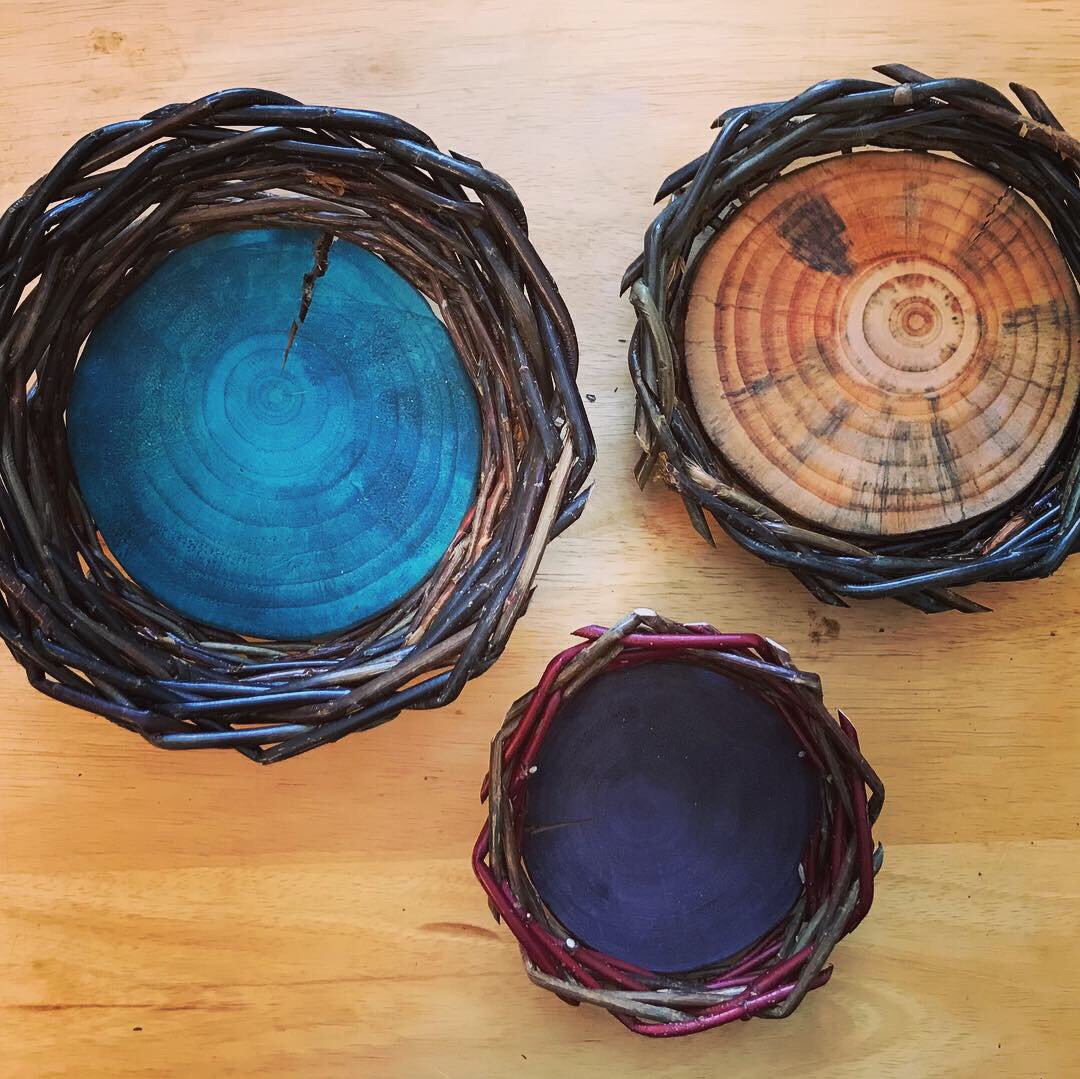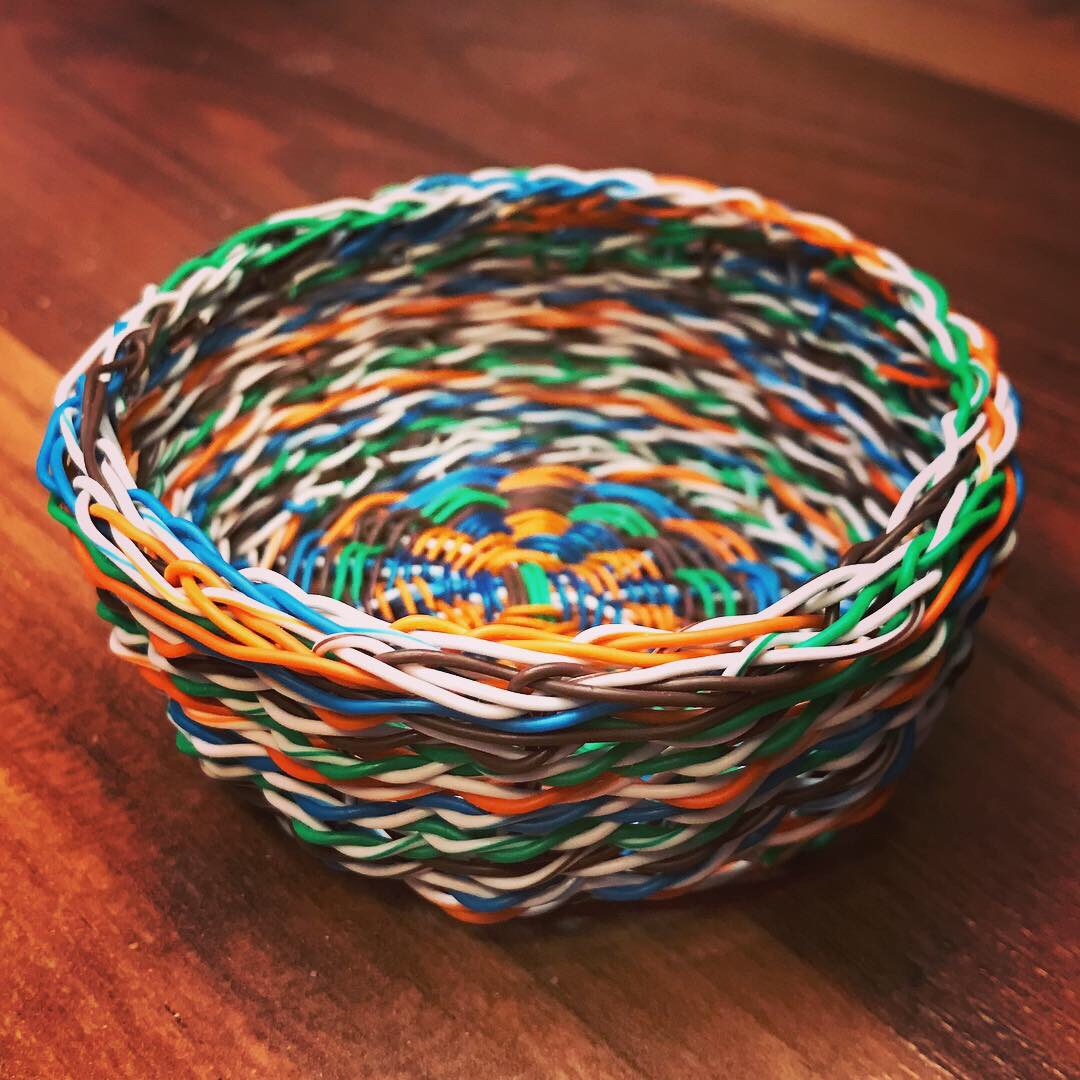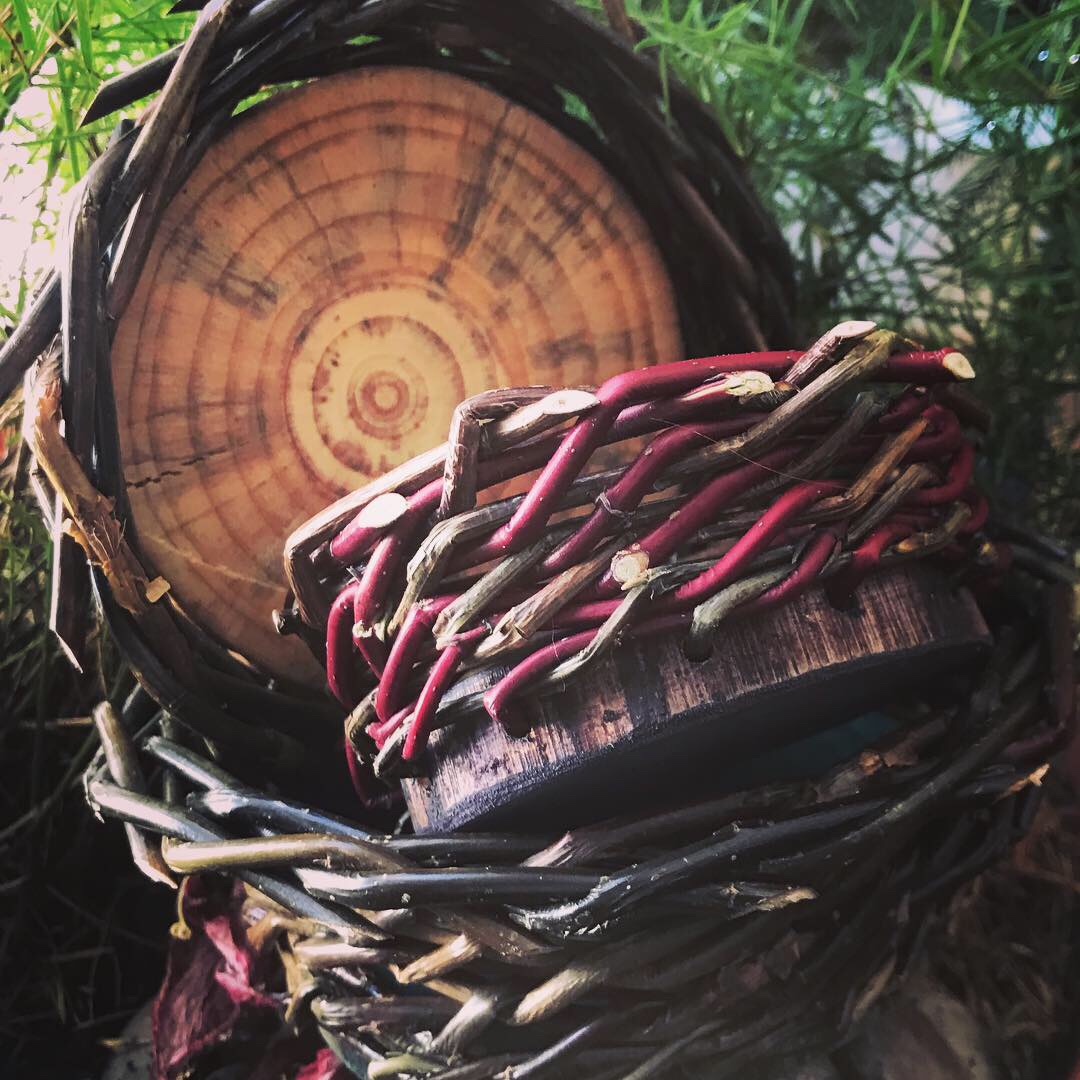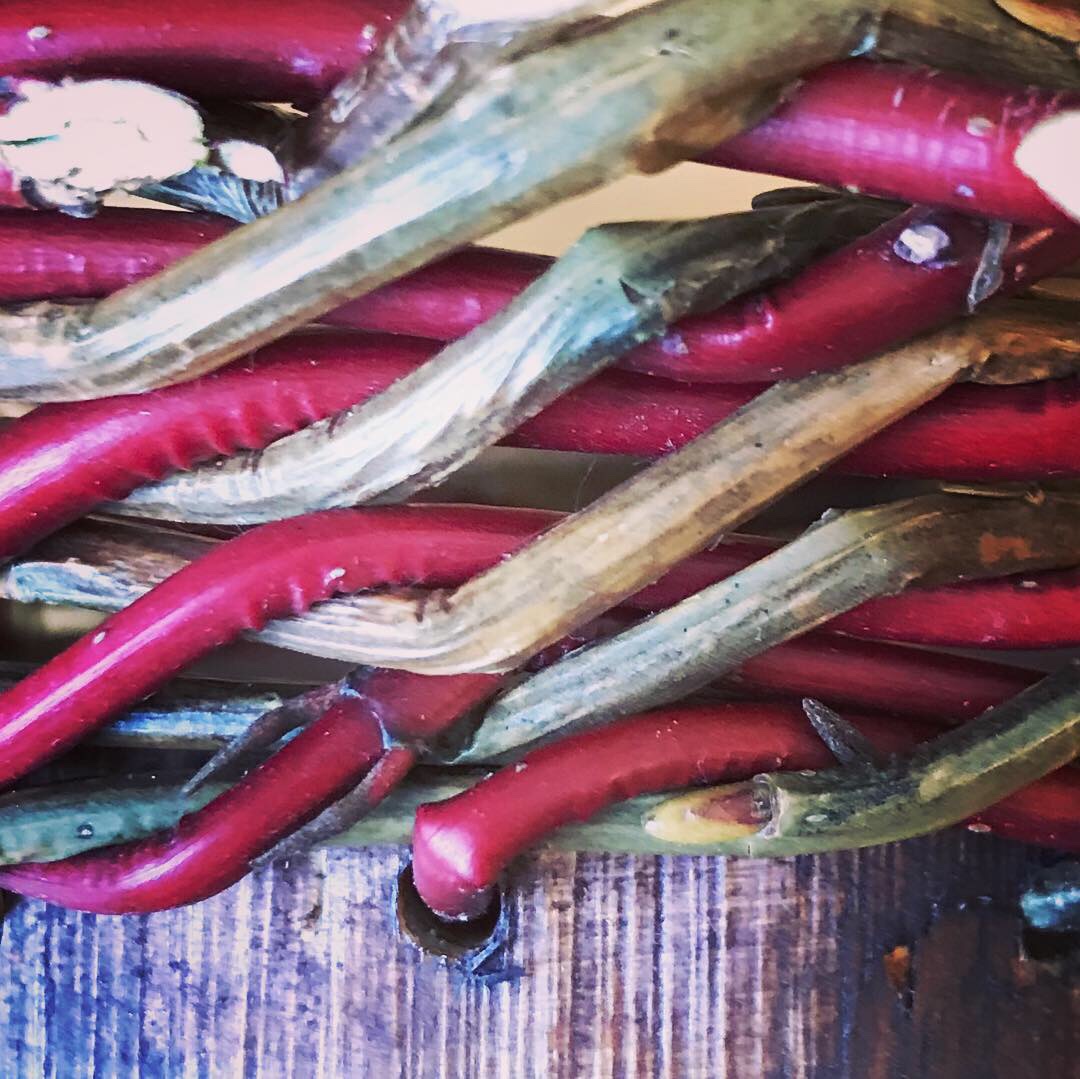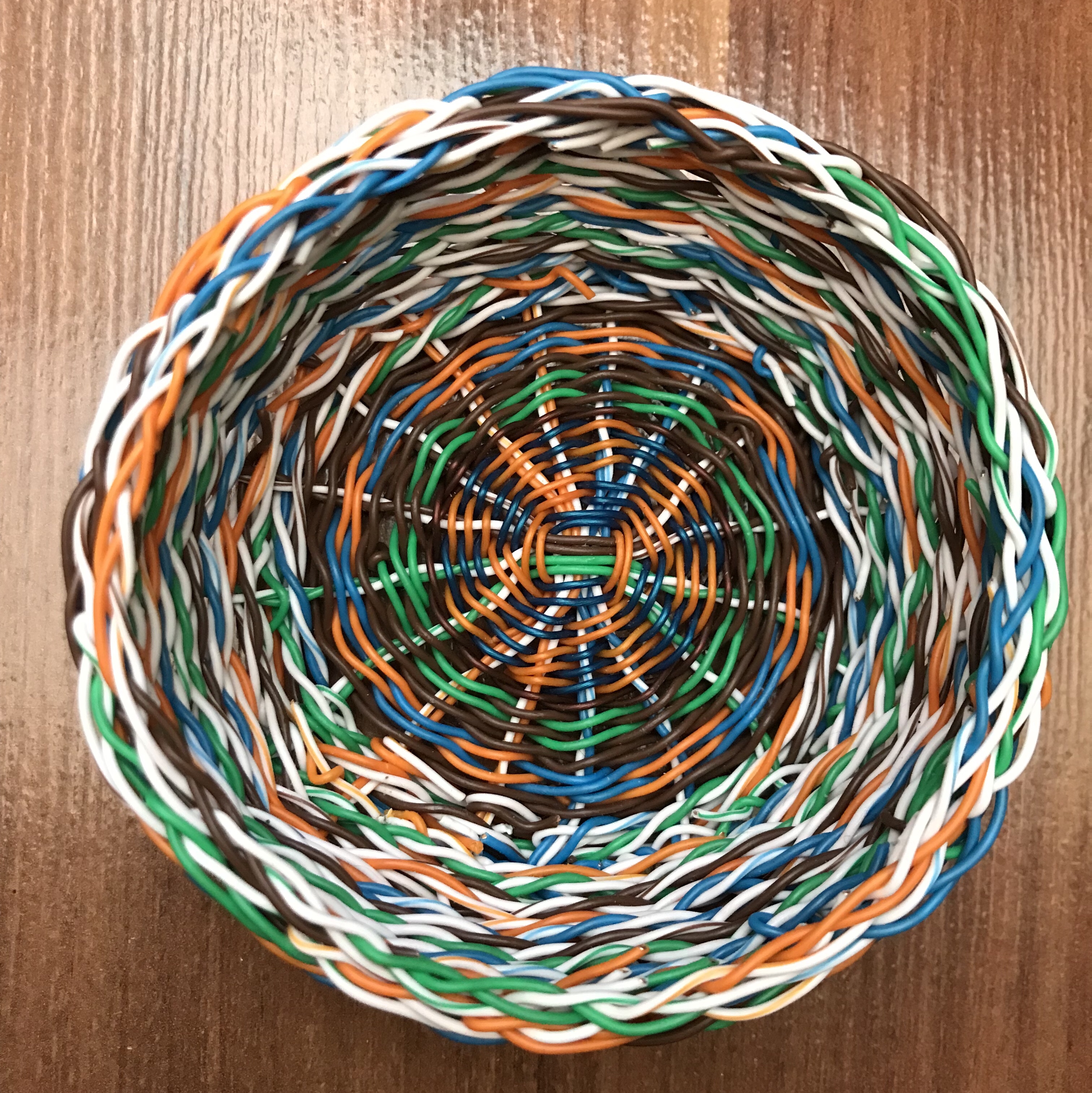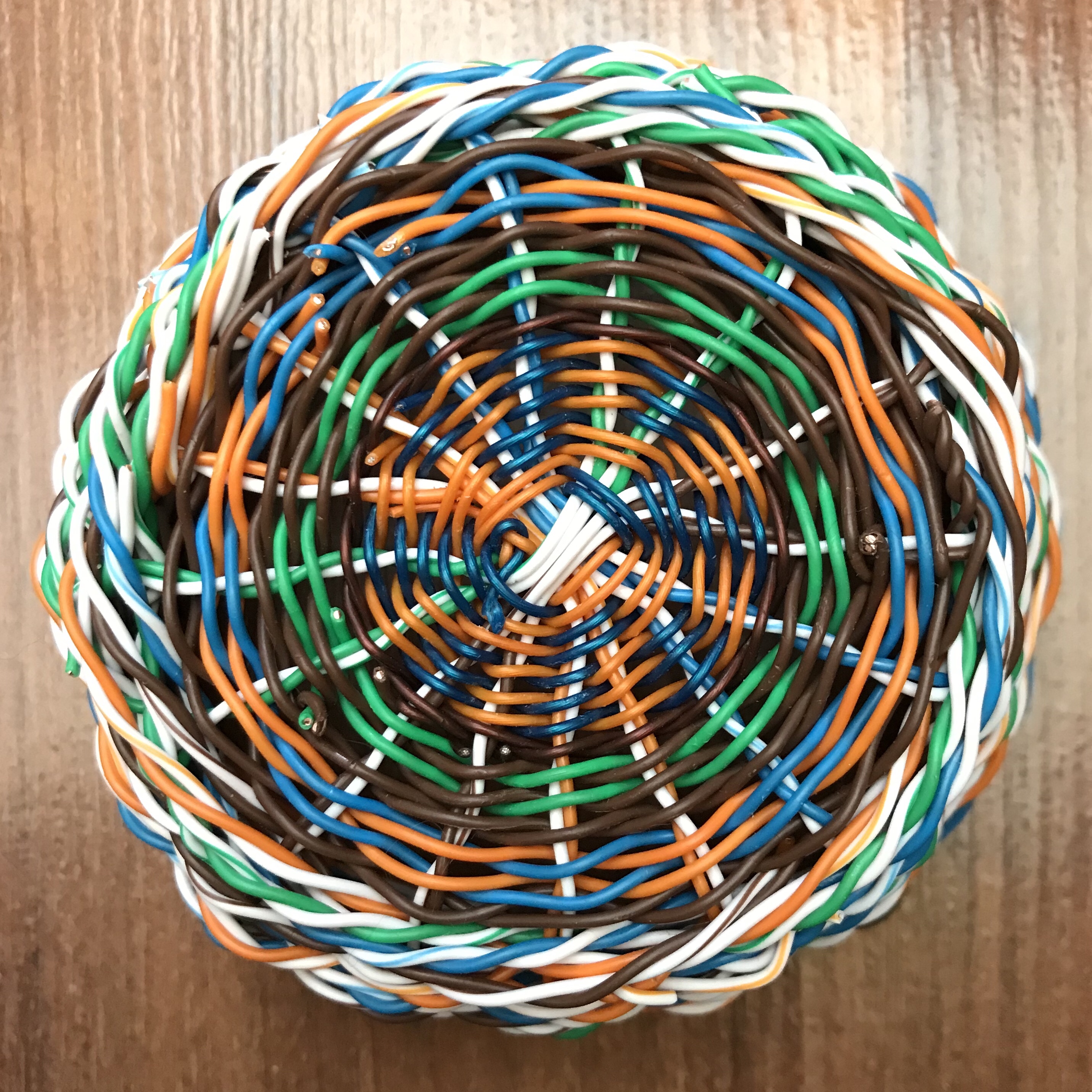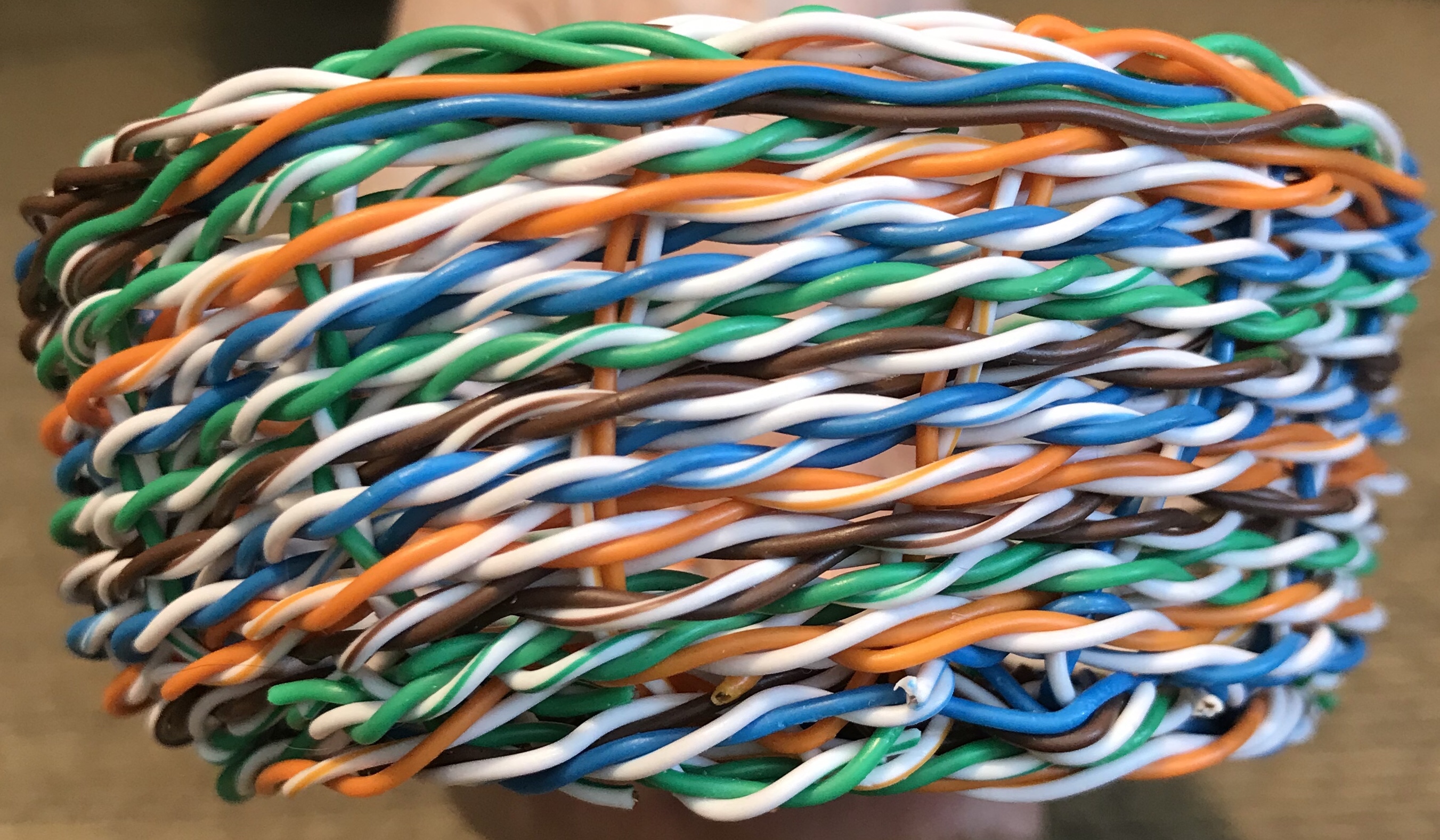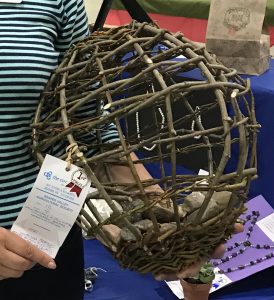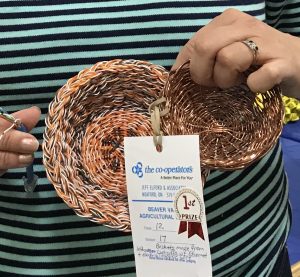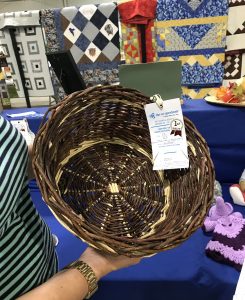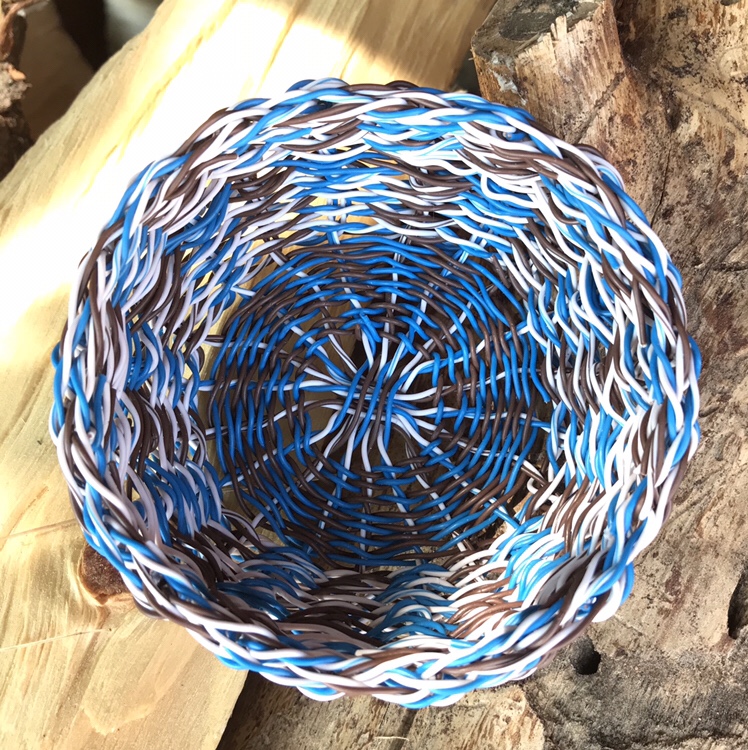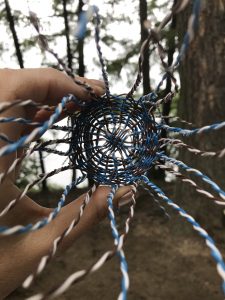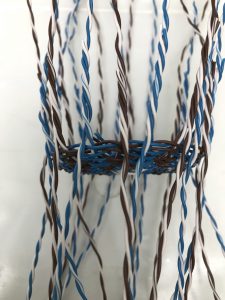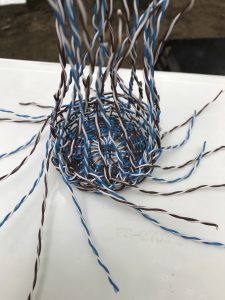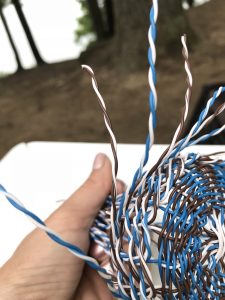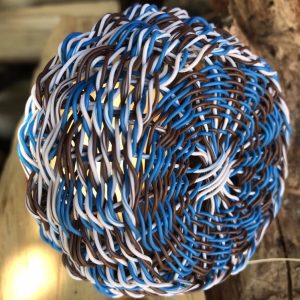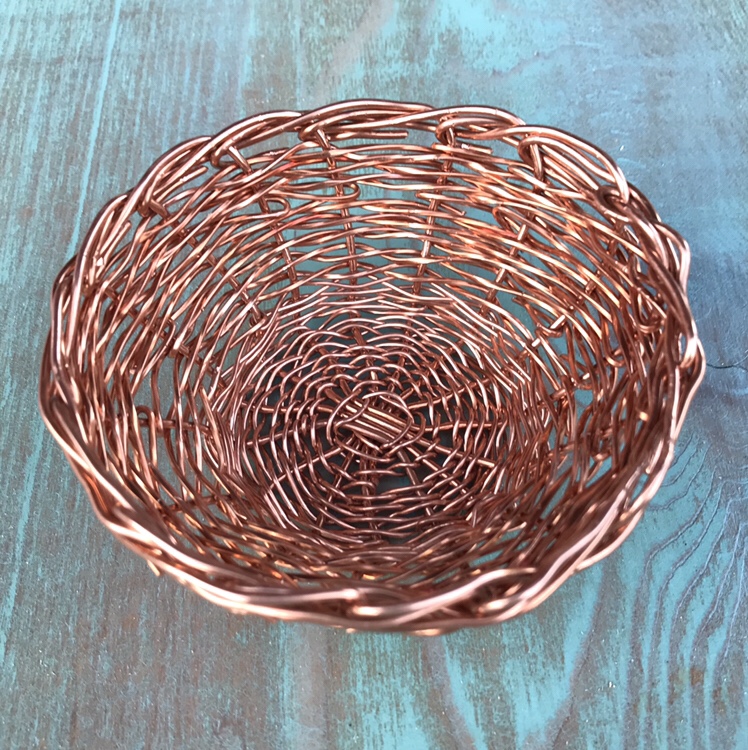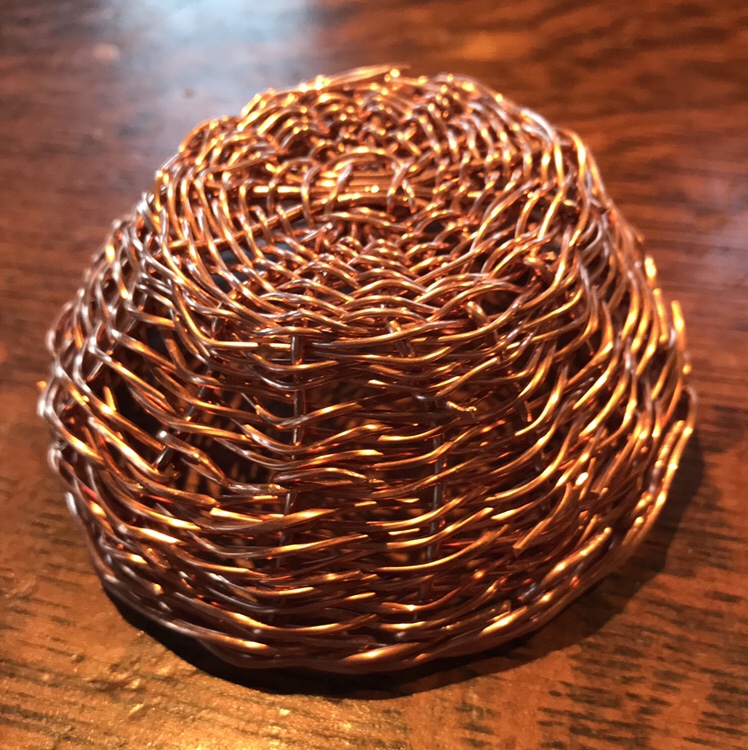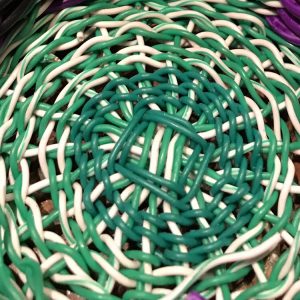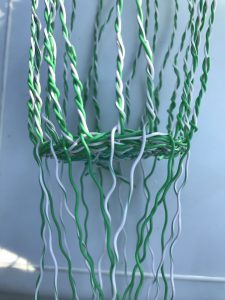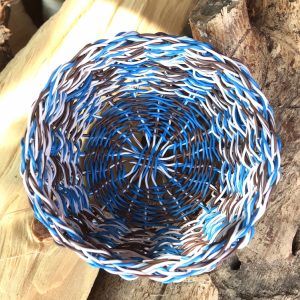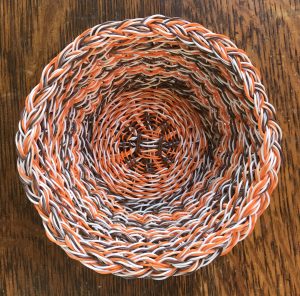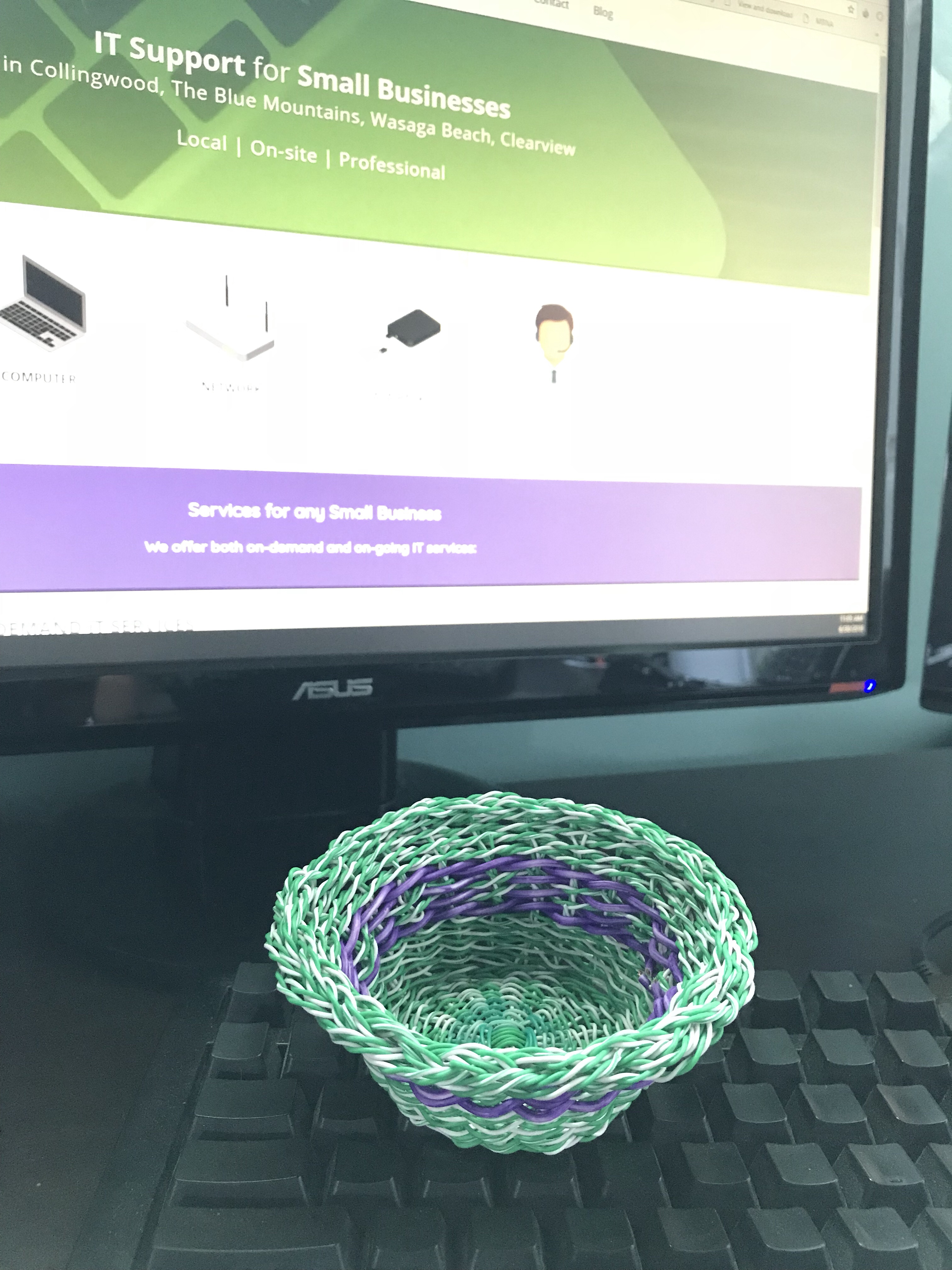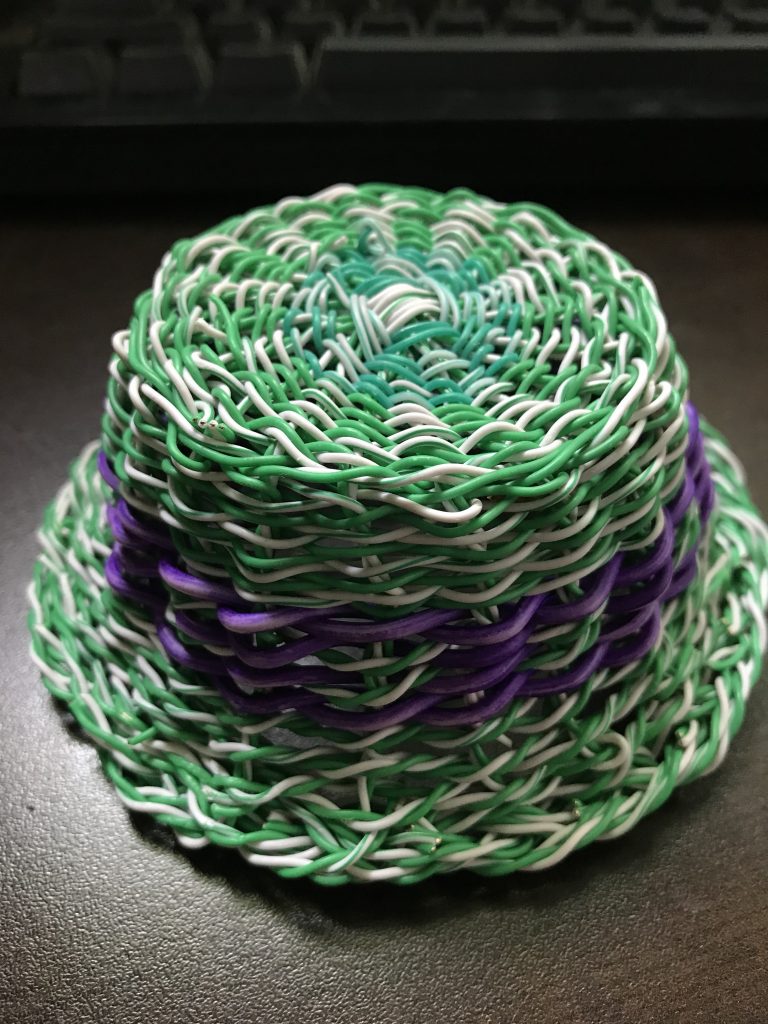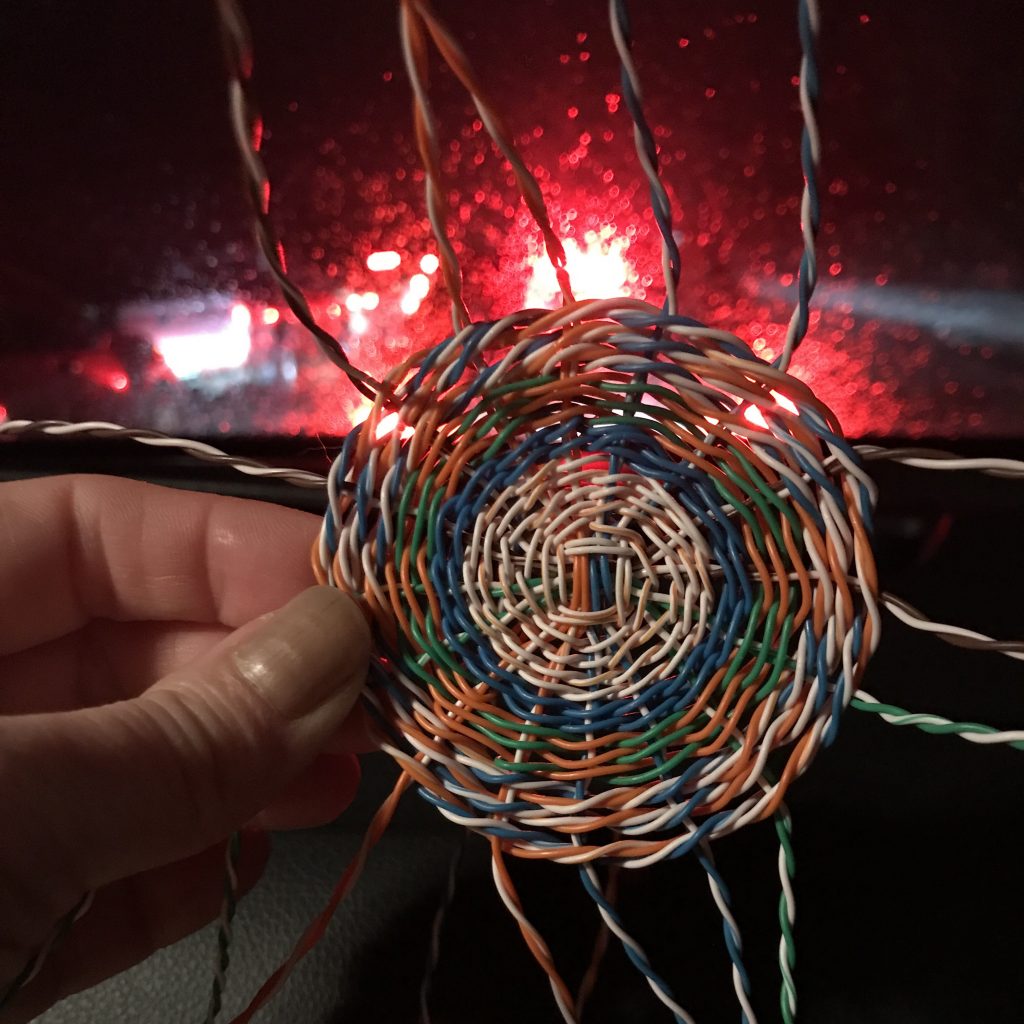 Our 3-hour drive from Kingston to Newmarket turned into 6.5 hours due to a highway closure and jam that was hours long because of it. While my husband had to stay at the wheel, I was able to make lemonade out of lemons by settling into a weaving an Ethernet wire basket. Unfortunately willow weaving is not so portable, but I always have some sewing or wire weaving with me for these long drives. Using the 4 standard wire colours of CAT 5 & CAT 6 wire, I untwisted the CAT 5 to start the base weave and then graduated to the thicker wire as the spacing got bigger.
Our 3-hour drive from Kingston to Newmarket turned into 6.5 hours due to a highway closure and jam that was hours long because of it. While my husband had to stay at the wheel, I was able to make lemonade out of lemons by settling into a weaving an Ethernet wire basket. Unfortunately willow weaving is not so portable, but I always have some sewing or wire weaving with me for these long drives. Using the 4 standard wire colours of CAT 5 & CAT 6 wire, I untwisted the CAT 5 to start the base weave and then graduated to the thicker wire as the spacing got bigger.
